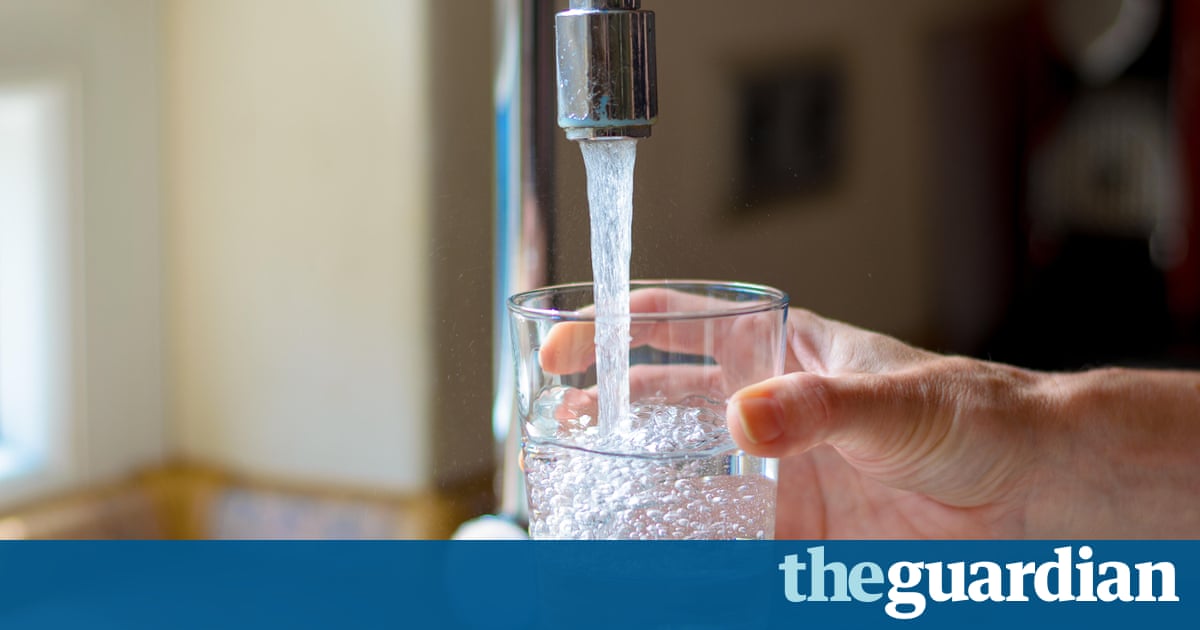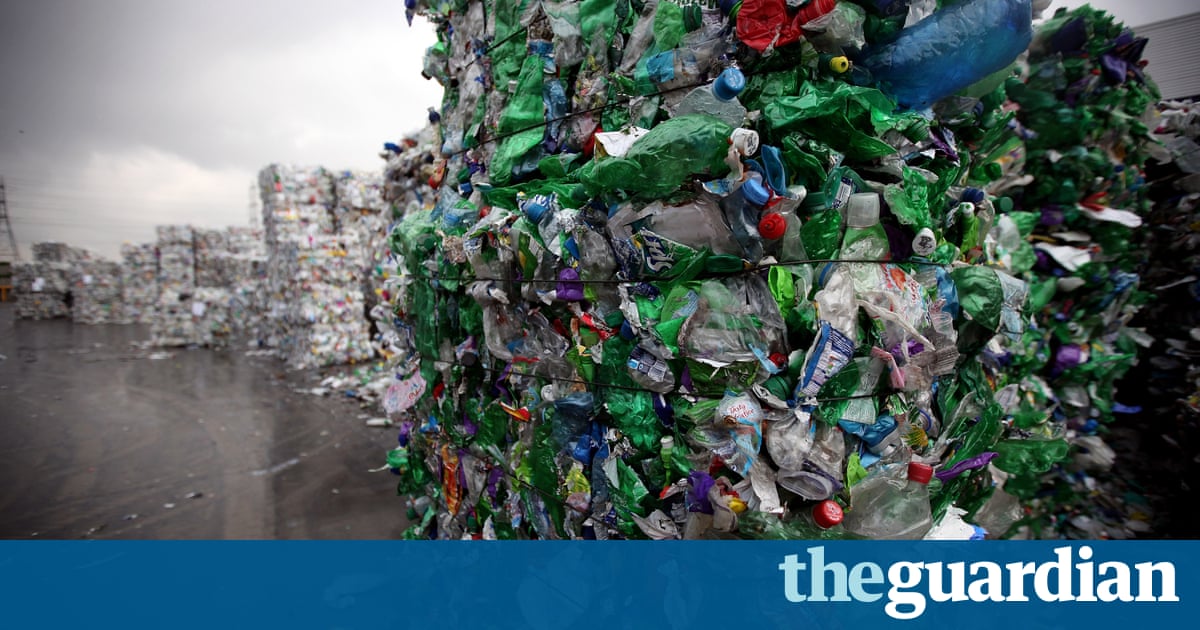Exclusive: Tests show billions of people globally are drinking water contaminated by plastic particles, with 83% of samples found to be polluted

Microplastic contamination has been found in tap water in countries around the world, leading to calls from scientists for urgent research on the implications for health.
Scores of tap water samples from more than a dozen nations were analysed by scientists for an investigation by Orb Media, who shared the findings with the Guardian. Overall, 83% of the samples were contaminated with plastic fibres.
The US had the highest contamination rate, at 94%, with plastic fibres found in tap water sampled at sites including Congress buildings, the US Environmental Protection Agencys headquarters, and Trump Tower in New York. Lebanon and India had the next highest rates.
European nations including the UK, Germany and France had the lowest contamination rate, but this was still 72%. The average number of fibres found in each 500ml sample ranged from 4.8 in the US to 1.9 in Europe.
The new analyses indicate the ubiquitous extent of microplastic contamination in the global environment. Previous work has been largely focused on plastic pollution in the oceans, which suggests people are eating microplastics via contaminated seafood.
We have enough data from looking at wildlife, and the impacts that its having on wildlife, to be concerned, said Dr Sherri Mason, a microplastic expert at the State University of New York in Fredonia, who supervised the analyses for Orb. If its impacting [wildlife], then how do we think that its not going to somehow impact us?
A separate small study in the Republic of Ireland released in June also found microplastic contamination in a handful of tap water and well samples. We dont know what the [health] impact is and for that reason we should follow the precautionary principle and put enough effort into it now, immediately, so we can find out what the real risks are, said Dr Anne Marie Mahon at the Galway-Mayo Institute of Technology, who conducted the research.
Mahon said there were two principal concerns: very small plastic particles and the chemicals or pathogens that microplastics can harbour. If the fibres are there, it is possible that the nanoparticles are there too that we cant measure, she said. Once they are in the nanometre range they can really penetrate a cell and that means they can penetrate organs, and that would be worrying. The Orb analyses caught particles of more than 2.5 microns in size, 2,500 times bigger than a nanometre.
Microplastics can attract bacteria found in sewage, Mahon said: Some studies have shown there are more harmful pathogens on microplastics downstream of wastewater treatment plants.
Microplastics are also known to contain and absorb toxic chemicals and research on wild animals shows they are released in the body. Prof Richard Thompson, at Plymouth University, UK, told Orb: It became clear very early on that the plastic would release those chemicals and that actually, the conditions in the gut would facilitate really quite rapid release. His research has shown microplastics are found in a third of fish caught in the UK.
The scale of global microplastic contamination is only starting to become clear, with studies in Germany finding fibres and fragments in all of the 24 beer brands they tested, as well as in honey and sugar. In Paris in 2015, researchers discovered microplastic falling from the air, which they estimated deposits three to 10 tonnes of fibres on the city each year, and that it was also present in the air in peoples homes.
This research led Frank Kelly, professor of environmental health at Kings College London, to tell a UK parliamentary inquiry in 2016: If we breathe them in they could potentially deliver chemicals to the lower parts of our lungs and maybe even across into our circulation. Having seen the Orb data, Kelly told the Guardian that research is urgently needed to determine whether ingesting plastic particles is a health risk.
The new research tested 159 samples using a standard technique to eliminate contamination from other sources and was performed at the University of Minnesota School of Public Health. The samples came from across the world, including from Uganda, Ecuador and Indonesia.
How microplastics end up in drinking water is for now a mystery, but the atmosphere is one obvious source, with fibres shed by the everyday wear and tear of clothes and carpets. Tumble dryers are another potential source, with almost 80% of US households having dryers that usually vent to the open air.
We really think that the lakes [and other water bodies] can be contaminated by cumulative atmospheric inputs, said Johnny Gasperi, at the University Paris-Est Creteil, who did the Paris studies. What we observed in Paris tends to demonstrate that a huge amount of fibres are present in atmospheric fallout.
Plastic fibres may also be flushed into water systems, with a recent study finding that each cycle of a washing machine could release 700,000 fibres into the environment. Rains could also sweep up microplastic pollution, which could explain why the household wells used in Indonesia were found to be contaminated.
In Beirut, Lebanon, the water supply comes from natural springs but 94% of the samples were contaminated. This research only scratches the surface, but it seems to be a very itchy one, said Hussam Hawwa, at the environmental consultancy Difaf, which collected samples for Orb.
Current standard water treatment systems do not filter out all of the microplastics, Mahon said: There is nowhere really where you can say these are being trapped 100%. In terms of fibres, the diameter is 10 microns across and it would be very unusual to find that level of filtration in our drinking water systems.
Bottled water may not provide a microplastic-free alternative to tapwater, as the they were also found in a few samples of commercial bottled water tested in the US for Orb.
Almost 300m tonnes of plastic is produced each year and, with just 20% recycled or incinerated, much of it ends up littering the air, land and sea. A report in July found 8.3bn tonnes of plastic has been produced since the 1950s, with the researchers warning that plastic waste has become ubiquitous in the environment.
We are increasingly smothering ecosystems in plastic and I am very worried that there may be all kinds of unintended, adverse consequences that we will only find out about once it is too late, said Prof Roland Geyer, from the University of California and Santa Barbara, who led the study.
Mahon said the new tap water analyses raise a red flag, but that more work is needed to replicate the results, find the sources of contamination and evaluate the possible health impacts.
She said plastics are very useful, but that management of the waste must be drastically improved: We need plastics in our lives, but it is us that is doing the damage by discarding them in very careless ways.
Read more: http://www.theguardian.com/us



